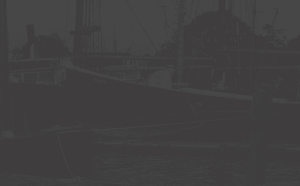About the Models
I make fine scale, scratch built models that are as accurate to the real vessel as existing research and my skill level will allow.
What does “fine scale” mean? It means that strict adherence to scale is of utmost importance in the rendering of a subject. In the shape or dimension of a hull it means that it will not be “out” by any more than 2 scale inches. At 1:48 scale, that means being off by no more that .040”, or about the width of a pen’s ball point.
What does “scratch built” mean? If a model builder says his ship models are scratch built, it means that he has made everything on the model with the exception of cordage, chain and belaying pins (Class A Scratch Built). If he used commercially available blocks or deadeyes or anything else, it may be considered Modified Scratch built (Class B). If the builder bought the hull and then made everything else, it may be considered a modified kit. These parameters apply only to ship models. Other model disciplines, such as model railroading have different standards.
What is a “target date”? Most wooden sailing vessels were built with the idea that they would last perhaps, 20 years. The surviving examples of these ships we see today have undergone extensive modifications and re-buildings. So, it is important for the model builder to decide on a target date so he can focus on a specific time in the vessel’s life and portray it as accurately as is possible.
MATERIALS
I try to choose materials and employ techniques that are meant to last a very long time.
- The hulls are usually basswood or pine (one solid piece for hulls 12” and under and waterline lifts for longer ones).
- Deck Furniture and details are boxwood, pear, poplar, apple, white holly, maple and cherry.
- Brass, copper or ni-chrome wire. No steel
- For sails, furled or unfurled I use silkspan in varying weights.
- For rigging I use linen, cotton, Egyptian cotton, silk and polyester, dyed an appropriate color.
- Metal work is either brass or copper.
PLANS AND RESEARCH
When possible, I will use the builder’s or designer’s actual plans for contemporary models, like the Neuman 46, pictured here. A set of plans was purchased directly from the designer and they were heavily supplemented with on site photos, notes and measurements.
For historic ships, I try to use plans developed by or for large maritime institutions (Mystic Seaport or New Bedford Whaling Museum, for example). The whaleboat model seen here was built from plans drawn up at Mystic Seaport. The actual boat is on display in the Mariner’s Museum in Newport News, VA. All of the whalecraft in this model are scale replicas of actual artifacts on display at the Nantucket Whaling Museum during the early 90s.
REPAIRS
If you have an antique model or pond boat, you may want to consider having it repaired or cleaned. Over the years, I have gathered quite a collection of antique woods, bone (whale and hoofed beasts) and ivory that I use for this purpose. A good example is the 19th century bone, ebony and ivory model of the New York packet ship, “Helena” that I worked on a few years back. The “before and after” can be pretty dramatic.
If you would like to find out a bit more about having a model repaired, click here.




